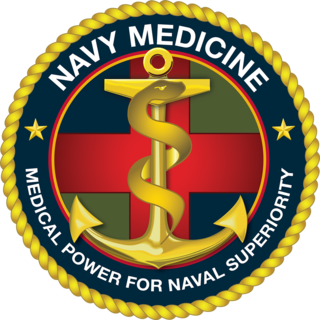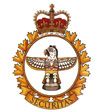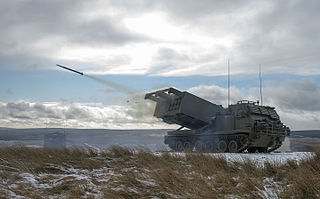
The Rush–Bagot Treaty or Rush–Bagot Disarmament was a treaty between the United States and Great Britain limiting naval armaments on the Great Lakes and Lake Champlain, following the War of 1812. It was ratified by the United States Senate on April 16, 1818, and was confirmed by Canada, following Confederation in 1867.
4 Canadian Division Support Base Petawawa, commonly referred to as Garrison Petawawa, is located in Petawawa, Ontario. It is operated as an army base by the Canadian Army.

A Canadian Forces base or CFB is a military installation of the Canadian Armed Forces. For a facility to qualify as a Canadian Forces base, it must station one or more major units.
Base Realignment and Closure (BRAC) was a process by a United States federal government commission to increase the efficiency of the United States Department of Defense by coordinating the realignment and closure of military installations following the end of the Cold War. Over 350 installations have been closed in five BRAC rounds: 1988, 1991, 1993, 1995, and 2005. These five BRAC rounds constitute a combined savings of $12 billion annually.

King Khalid Military City (KKMC) is a cantonment in northeastern Saudi Arabia, about 60 km south of Hafar al-Batin city. The city was designed and built in the 1970s and the 1980s by the Middle East Division, a unit of the United States Army Corps of Engineers. Consultants for its building include Brown, Daltas, and Associates and LeMessurier in Cambridge, Massachusetts. It was designed and built to provide lodging for several brigades of Saudi troops and a population of 65,000 people.

The Canadian Forces Military Police provide police, security and operational support services to the Canadian Armed Forces (CAF) and the Department of National Defence (DND) worldwide.

The United States Military Entrance Processing Command (USMEPCOM) is a Major Command of the U.S. Department of Defense, which primarily screens and processes enlisted personnel applicants into the United States Armed Forces.
Canadian Forces Base London is a former Canadian Forces Base that was located in London, Ontario, Canada. It was downsized and closed during defence budget cutbacks in the 1990s. Local Primary Reserve units were supported by Area Support Unit (ASU) London which was located in some of the remaining base buildings, but they are now supported by ASU Toronto. Much of this support is delivered by a Technical Services Platoon which remains stationed in London.

The Bureau of Medicine and Surgery (BUMED) is an agency of the United States Department of the Navy that manages health care activities for the United States Navy and the United States Marine Corps. BUMED operates hospitals and other healthcare facilities as well as laboratories for biomedical research, and trains and manages the Navy's many staff corps related to medicine. Its headquarters is located at the Defense Health Headquarters in Fairfax County, Virginia. BUMED has 41,930 medical personnel and more than a million eligible beneficiaries.

2 Military Police Regiment is a unit of the Canadian Forces. It provides support to the Canadian Army within the Province of Ontario. It does not provide support to Canadian Forces Bases Borden, Trenton and North Bay and Canadian Forces Support Unit (Ottawa). The unit was initially created in the summer of 2006. Since then, the unit was officially established by a ministerial organization order (MOO) and a Canadian Forces organization order (CFOO) dated September 24, 2007. It is a "total force" unit of the Canadian Army Military Police Group (CA MP Gp). The term total force describes a unit which includes both Regular Force and Reserve Force members. 2 MP Regt is responsible for police, security and detention operations as well as police support in field operations. The unit headquarters is located at the George Taylor Denison III Armoury, more commonly known as Denison Armoury, in Toronto, Ontario. The strength of 2 MP Regt totals just under 300 personnel. Since the transfer of command authority (TOCA) on 1 April 2011, 2 MP Regt is under the full command of the Canadian Forces Military Police Group through the CA MP Gp, and attached operational command (OPCOM) to the 4th Canadian Division. The unit is commanded by a major as the commanding officer (CO) and the unit has a master warrant officer who is the regimental sergeant major (RSM). The CO of 2 MP Regt reports directly to the commander of the CA MP Gp, as well as the commander of 4 Cdn Div. The CO has a dual function as commanding officer and division provost marshal.

A military training area, training area or training centre (Canada) is land set aside specifically to enable military forces to train and exercise for combat. Training areas are usually out of bounds to the general public, but some have limited access when not in use. As well as their military function, they often serve as important wildlife refuges. They are distinct from proving grounds which are designed for purposes such as testing weaponry or equipment.

Joint Base San Antonio (JBSA) is a United States military facility located in San Antonio, Texas, US. The facility is under the jurisdiction of the United States Air Force 502d Air Base Wing, Air Education and Training Command (AETC). The wing's three Mission Support Groups perform the installation support mission at the three bases that form JBSA.
The preliminary 1991 Base Realignment and Closure Commission list was released by the United States Department of Defense in 1991 as part of the ongoing Base Realignment and Closure Commission. The list recommended closing 28 major United States military bases throughout the nation. This was the last Base Realignment and Closure Commission prior to the dissolution of the Soviet Union ending the Cold War.
This page is based on this
Wikipedia article Text is available under the
CC BY-SA 4.0 license; additional terms may apply.
Images, videos and audio are available under their respective licenses.








